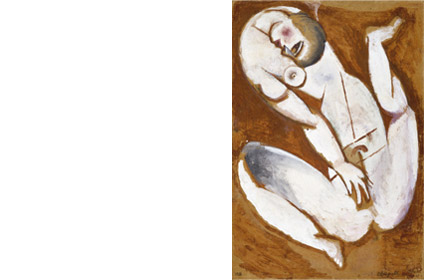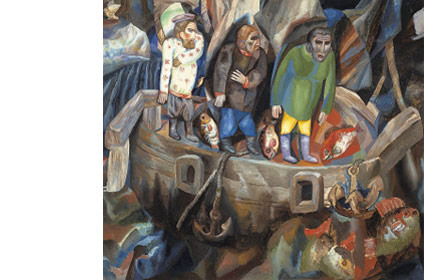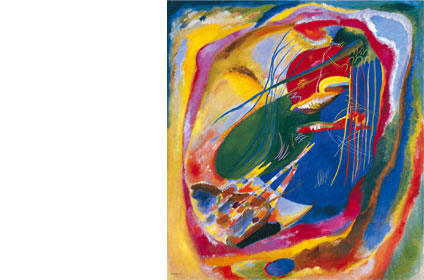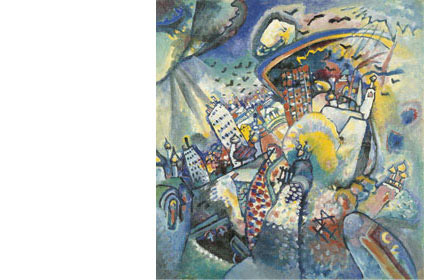
|
INDIVIDUAL EXPERIMENTS In contrast to the artists mentioned above, Chagall, Kandinsky and Filonov chose to remain apart from any group and from the constantly changing scenario of artists' associations of the period, embarking on their own process of visual experimentation. Chagall's metaphorical and poetic painting has its origins in his Jewish roots and in certain magical traditions which fill his art with fantastical elements. Kandinsky's philosophical, expressive and romantic art, conceived in the manner of a new aesthetic capable of transforming life, derives in turn from his early training within the orbit of Symbolism and his knowledge of the international art scene. Finally, the art of Filonov - one of the least known internationally of the Russian avant-garde painters - aims to create an impalpable and transparent pictorial space. The artist used minute brushstrokes and highly subtle paint layers to create his distinctive and unique ghostly forms and a conception of the world in which death and re-birth walk hand in hand. |
|
Marc Chagall Nude in Movement, 1913 Gouache on kraft paper on canvas. 34.7 x 23.9 cm Centre Georges Pompidou, París Musée national d'art moderne/Centre de création industrielle |
|

|
Marc Chagall The Promenade, 1917 Oil on canvas. 175.2 x 168.4 cm State Russian Museum, St. Petersburg |

|
Pavel Filonov West and East, 1912-1913 Oil, tempera, and gouache on paper. 39.5 x 46 cm State Russian Museum, St. Petersburg |

|
Wassily Kandinsky Picture with Three Spots, 1914 Oil on canvas. 121 x 111 cm Museo Thyssen-Bornemisza, Madrid |

|
Wassily Kandinsky Moscow I, 1916 Oil on canvas. 51.5 x 49.5 cm State Tretyakov Gallery, Moscow |









